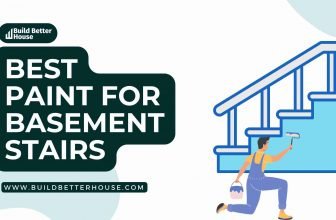9 Easy Prevention Tips To Fix Mold In Crawl Space

Any area of your home with mold is toxic and harmful to the structure. To prevent further issues, you should take immediate action if you notice mold in crawl space or under your house.
This article will examine mold in crawl spaces and removal techniques. In addition, we’ll discuss the root causes of decay so you can know how to avoid mold in crawl spaces.
Understanding how mold in crawl space functions will put you one step ahead of this aggravating and potentially dangerous issue.
Mold in crawl space: Health concerns
Mold in crawl spaces is problematic because mold develops beneath your home’s first floor, where the environment is gloomy, damp, and poorly ventilated. The conditions are excellent for a mold epidemic, which can pose significant health risks in such a small area.
Another factor to consider is the type of mold in crawl space. White mold in crawl space is less hazardous than Stachybotrys chartarum. The elimination of this strain of black mold in crawl space by yourself might be pretty dangerous to your health.
Consider testing the mold in crawl space before beginning your cleanup so you know all the solutions to deal with mold in crawl space.
How many molds are tolerable in the crawl space?
Mold in crawl space must never reach an acceptable level. You should strive for zero molds in the crawl space since it is an allergen and can lead to health issues. Even a small quantity of mold in crawl spaces will develop and spread, particularly as some of the air in the crawl space penetrates your home.
Mold in crawl space: 9 Easy Prevention Tips
Since mold in crawl spaces is a common concern, dealing with it is vital. The following six tips can help to reduce or eliminate the possibility of mold invading your home’s crawl space.
Check for leaks
At least twice a year, inspect the crawl space. A minor leak that goes undetected creates an excellent setting for mold. After plumbing difficulties, check under the home.
Installing a sump pump which can help prevent crawl space flooding.
Condensation insulation
Insulation keeps pipes from freezing and prevents condensation from collecting on pipe surfaces. Otherwise, temperature fluctuations cause damp pipe exteriors, which constitute a source of moisture for mold growth.
Replace foundational cracks
Dampness frequently enters the crawl area through hairline cracks in the foundation walls. Small foundation repairs prevent more significant mold problems from spreading through your home’s beams and subflooring.
Use ventilation
Once fungal growth takes root, it flourishes in the damp, stagnant environment beneath your house. Ventilating the crawl space circulates fresh air and keeps humidity at bay.
This decreases the concentration of airborne spores, making a mold in crawl space spread more difficult. Make sure the clothes dryer vent is located outside the crawl space.
Set up a vapor barrier
A vapor barrier may not eliminate moisture in a crawl space, but it does provide a crucial layer of mold protection. The plastic membrane aids in the regulation of natural dampness that rises into the house, influencing wood, flooring, drywall, insulation, and indoor air quality.
Redirect rainwater
Downspouts should be directed at least 6 feet away from the home to complete their work. Install concrete splash blocks to prevent heavy rain from accumulating around the foundation.
Borax
Borax is another effective component against all molds while leaving none behind. However, remember that this substance can be dangerous, so only apply it in places where you will not breathe it or eat anything. Also, when using borax, use extreme caution because it can injure your skin and eyes and be toxic to pets.
Another advantage of borax is that it is safe to depart after spraying the affected region. It is not necessary to rinse.
Free of any organic material
It is critical to ensure that there is no organic material in the crawl area to prevent mold and mildew. Wood, paper, cardboard, and organic fibers are such materials. These products, which provide an ideal habitat for mold growth, should be removed from the area.
Dehumidifier
You must manage the humidity levels in your crawl space. Mold grows in high humidity; thus, it is critical to maintaining the crawl space as dry as possible. This can be accomplished by employing a dehumidifier to regulate humidity levels between 40 and 55%.
Additionally, you should inspect the region for any moisture problems and address them as soon as possible.
These simple tips reduce the likelihood of crawl space, which reduces the risk of mold forming beneath your home. Remember that your house’s health is just as important as yours; if something is wrong, it will undoubtedly affect you. As a result, keep it properly maintained.
Mold in crawl space: How much does it cost to fix it?
Mold removal from a crawl space costs between $1,500 and $4,000. The expenses include mold removal, cleanup, and any necessary repairs. The final price can be higher when the damage is substantial and concerns the home’s structural integrity.
Summing up
Whether you have white or black mold in crawl space, you must act quickly to eliminate it. Mold in crawl spaces can grow rapidly under the house, even if only a small amount. With the proper assistance, you can effectively remove the mold.
Most homeowners need help to complete this task because it includes locating the source of the mold in crawl spaces problem and offering a proper permanent remedy to ensure it does not reoccur.
Mold is a nasty and dangerous fungus that may quickly spread beneath your house and mold in crawl spaces. Preventative measures are advantageous; thus, following these six tips to avoid mold in crawl spaces may remove future concerns and expenses.
FAQs
1. Is it necessary to test the air in my crawl space?
No, mold testing should only be done in the home’s conditioned area. Testing in the crawlspace could be more effective because these locations have direct circulation with outside air.
2. Has the mold harmed the framing’s structural integrity?
The mold growth observed in a crawl space does not affect the framing’s strength. However, prolonged saturation might result in further fungal growth that will destroy the structure.
Read more:
Best Sump Pump For A Pond: How To Install + Benefits
Sewer Smell In The Basement? Why It’s Happening & How To Fix It
3 Best Basement Carpet Ideas for a Cozy Home
How To Fix Clogged Shower Drain? Complete Guide
How To Install And Maintain Garden Hose Check Valve?






